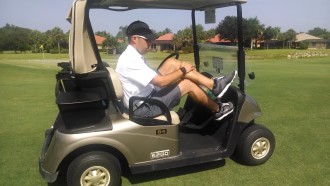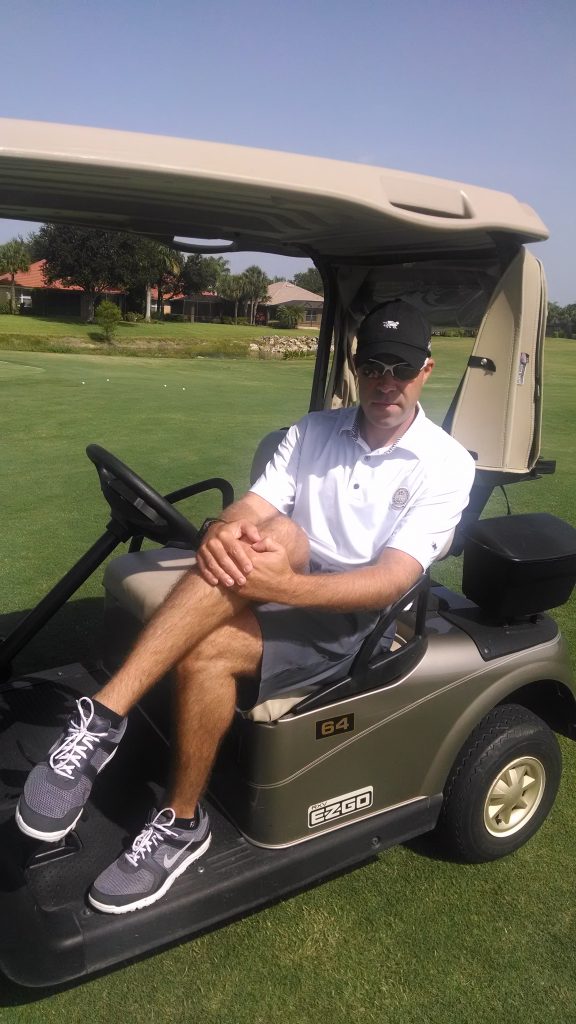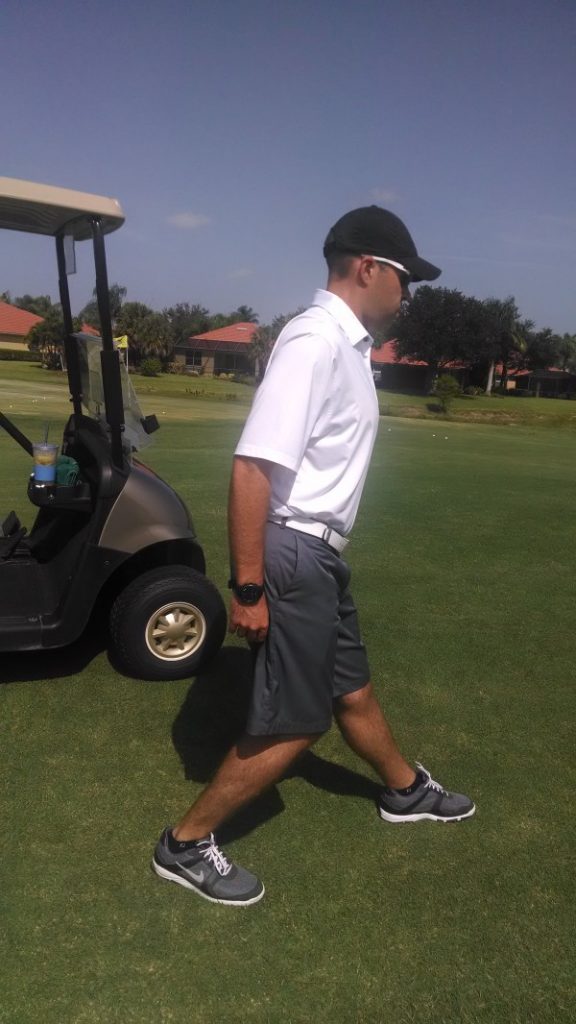Achilles tendonitis is not a normal golfers pain issue, but if you also enjoy running as an exercise, or if you drive a car for long distances, it can become a serious problem. Achilles tendonitis can cause such pain that it will alter your swing and affect your score. In fact, if not treated properly it can even tear the muscle or tear the tendon from the bone. Through the years I’ve seen people stretching the muscles trying to release the tension on the Achilles tendon, but that can cause potential harm if the spasms aren’t released first.
This blog will show you how to find and treat and safely stretch your calf muscles, taking the strain off the Achilles tendon, but first here’s an interesting video that explains the muscles that cause Achilles tendonitis and heel pain:
It will help if you have a deeper understanding of the muscles that move your ankle and foot. Your gastrocnemius and soleus muscles both merge into your Achilles tendon, which then attaches to your heel bone (calcaneus). When the muscles contract and pull up on the tendon, you lift up your heel. When you are standing on your toes you are totally contracting both of the calf muscles. Achilles tendonitis, Ankle and Foot Pain is a short video that will help to make this clear.
As you drive for long distances your right foot is constantly pressing down on the gas pedal, and straining the calf muscles that merge into your Achilles tendon. You think your body is at ease while driving, yet you are actually seriously repetitively straining your right calf muscle.
The problem is people try to stretch when they still have spasms. The analogy I always use is, if you take a line that is 12″ long and tie enough knots in it so it is now 11″ long, and then try to stretch it back to 12″ without first untying the knots. You can imagine what will happen – the knots will get tighter and the fibers outside of the knot will overstretch. Plus, when it’s the muscle that is tied up in knots (spasms) there will be pressure on the insertion points on the bones at each end.
A popular stretch for the calf is to do heel drops off a step, but this can actually ultimately tear the muscle fibers. Doing heel drops without first releasing the spasms is causing the fibers outside of the spasm to overstretch. That’s why it feels good for a while (the muscle has stretched) and also why it again shortens (the muscles return to their normal length, but with the spasm in the middle there is a strain on both ends of the muscle).
Fortunately, releasing the spasms is easy and can even be done while you are out for your run. The next four pictures will show you how to treat the muscles and then how to safely stretch the muscles that affect your Achilles tendon.
(NOTE: I’ve re-posted this blog, slightly changing the title, because people told me the pictures weren’t setting properly. Even with the re-write, for some reason this program is making big spaces between the pictures so please just continue moving down and ignore the large white spaces if they show up on your computer. I couldn’t fix them – I understand the body, but computers are a challenge! LOL)
Sit down and put your calf into your opposite knee and then use your hands to help press the muscle deeper:
Relieving Achilles Pain: Step 1.

The next picture is showing how to treat your calf on the inside. To reach the entire muscle just rotate your leg around so you get the inside and the belly of the two calf muscles. Then turn your foot in the opposite direction so you can reach the outside of the calf muscles.
You can also treat both of the entire muscles, from the back of your knee to the sides of your Achilles tendon by leaning back in your golf cart and placing the inside (shown) and outside of your calf onto your bent knee.
If you are at home you can lie on your bed and put your calf on your opposite bent knee.
Press your calf down as hard as you can and don’t slide your knee down your calf, but instead stay in one spot, then lift your leg and move it to the next spot.


Finally, to safely stretch your calf muscles without straining your Achilles tendon, stand up straight (you don’t need to be leaning on a tree for this) and do the familiar stretch for the gastrocnemius that most athletes already know.
Bend your forward knee and keep your back leg straight with your heel on the ground.
The stretch that is frequently missing is what I feel is the most important, stretching your soleus muscle.
Your soleus muscle is underneath the gastrocnemius, but both muscles merge into your Achilles tendon.
Stand up straight, move your pelvis back as you straighten your front leg and bend your back leg
You’ll really feel the difference, this stretch will be felt much closer to your Achilles tendon area.

As you treat the muscles of your calf you’ll find that you have more flexibility in your ankle. It will have some impact on your swing, but it will have a great impact on how you walk and feel!
Have a great time on the course!
Wishing you well,
Julie
(This blog was re-posted to resolve a problem with photographs. I hope they are staying where they belong now.